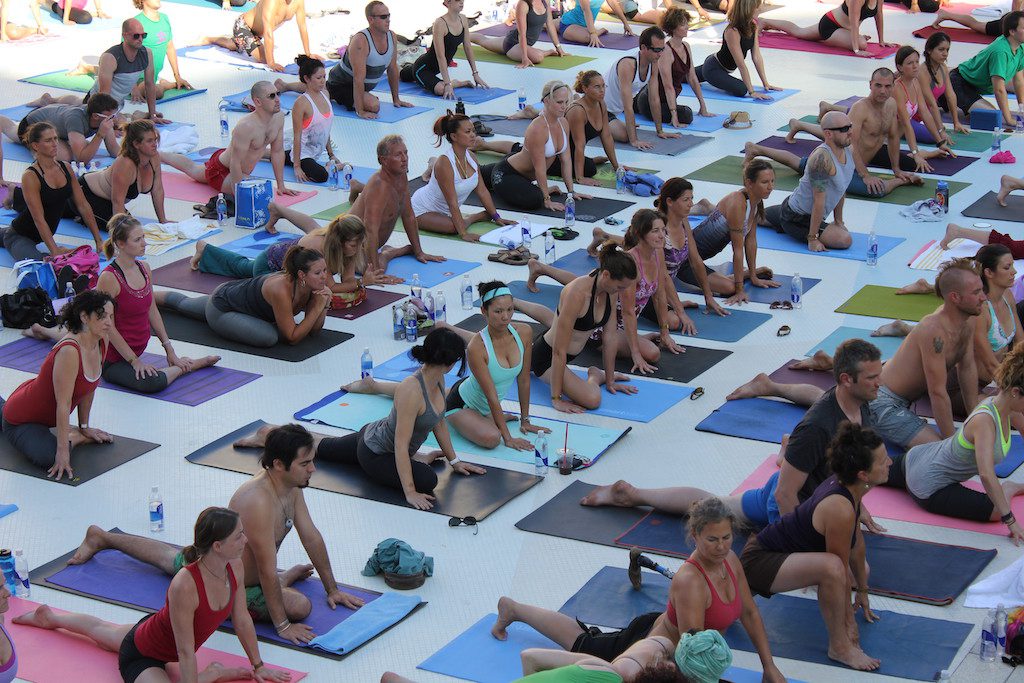Skift Take
Reading between the lines, it seems many events are making modest tweaks to ensure attendees aren't sitting in their chairs feeling miserable all day. You don't need yoga and hikes to make an event slightly healthier.
Health and wellness have become more important for events in recent years, as business travelers and organizations alike embrace bringing healthy lifestyle elements into the mainstream.
Meeting planners, however, don’t consider the events they coordinate to be entirely healthy, according to new research from the Incentive Research Foundation. The IRF 2019 Wellness in Meetings and Incentive Travel Study polled 329 event professionals on the role of wellness in their events and the elements of meetings that involve wellness.
A majority of planners said their events are somewhat healthy, with 7 percent saying their events aren’t healthy at all. A no-smoking policy along with water and low-calorie drinks were the most standard wellness elements at an event.
| How Healthy Are Meetings Today? | |
|---|---|
| Very Healthy | 5% |
| Mostly Healthy | 24% |
| Somewhat Healthy | 64% |
| Not at all Healthy | 7% |
Source: IRF
It’s not just limited budgets that has prevented events from becoming healthier, though. Having a bigger budget would lead to a 9 percent increase in a planner considering an event very healthy and a 6 percent increase in mostly healthy. It would seem that developing a distinct wellness and health plan for each event planned may simply not fit into the workflow of many planners.
There’s also the reality that people go to events in order to let loose with their friends; not everyone is up for the morning jog or group yoga session in the afternoon.
“Meeting planners reported high rates of personal enthusiasm for health and wellness in their meetings,” states the report. “Perhaps even more importantly, planners reported that their clients and companies would agree ‘wellness is a critical focus.’ Planners noted that their companies demonstrated this value by having wellness programs in place. However, there appears to be a disconnect between the stated wellness programs of the company and implementation of the meeting strategy. External planners reported being more successful at implementation than internal planners did.”
External planners said their clients were more willing to accept additional costs pertaining to wellness. Internal planners noted that their organizations didn’t have standard wellness policies relating to events, and haven’t looked to partner with specific companies to bring wellness to their events.
In terms of dining, organic meals and nutrition guides for attendees are seen as needing additional budget approval. Many activities, including group fitness activities and speakers on wellness, would require larger budgets.
Things like a more casual dress code, free access to a fitness center, or scheduled time for attendees to get out of their seats and move around were some of the more popular ways to create a healthier event. This makes sense; you don’t need to gamify walking around with Fitbits or hire a wellness speaker to have an impact on the experience of your attendees.
Have a confidential tip for Skift? Get in touch
Tags: meetings, meetingsiq, wellness
Photo credit: People at a yoga event at The Cosmopolitan of Las Vegas. Cosmopolitan of Las Vegas / Flickr
